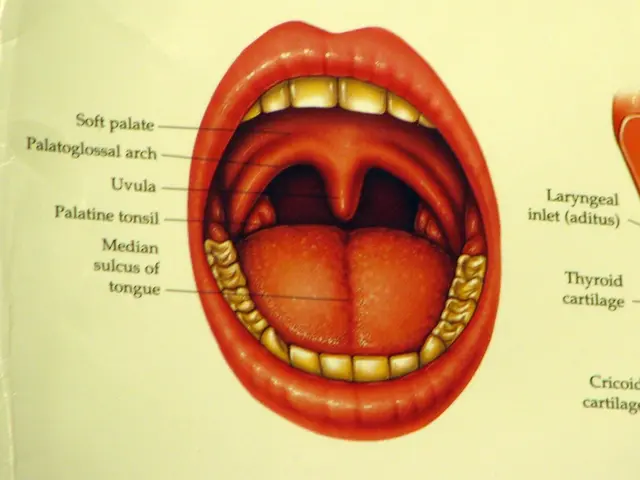Connection Between Breast and Ovarian Cancer: Causes and Risk Factors
Breast and ovarian cancer – two health issues that closely intertwine, predominantly due to genetic factors and a handful of common environmental and lifestyle risk factors.
Mutations and Family Histories
- The presence of mutated BRCA1 and BRCA2 genes significantly heightens the risks for both tumors. Women with such mutations have a substantially greater lifetime risk of developing both cancers, compared to the general population[2][4][5].
- Family history of breast or ovarian cancer is a strong risk indicator. This connection is often associated with inherited genetic syndromes, such as hereditary breast and ovarian cancer syndrome[4][5].
- Other hereditary gene mutations (e.g., TP53, PTEN, PALB2, and genes associated with Lynch syndrome) can also increase the risk for both cancers, although less frequently[4].
Age, weight, and hormones
- Risk for both breast and ovarian cancer climbs with age, particularly post-menopause in the case of ovarian cancer[1].
- Overweight or obesity is linked to increased risk for breast cancer in postmenopausal women, and while connections to ovarian cancer are less certain, evidence suggests a possible link[1].
- Prolonged exposure to estrogen, such as early menstruation, late menopause, or hormone replacement therapy, raises the risk for both cancers[1].
- Nulliparity (never having given birth) or late childbirth can increase the likelihood, whereas pregnancy and breastfeeding may provide protection for both cancers, particularly for ovarian cancer due to reduced ovulation[3].
- Regular alcohol use is a well-established risk factor for breast cancer; its role in ovarian cancer remains unclear but is still under investigation[1].
- A sedentary lifestyle is linked to a higher risk of breast cancer and may be a contributing factor for ovarian cancer as well[1].
Staying Aware and Protective
- Given the strong genetic connection, efficient screening and preventative measures are crucial for those at higher risk.
- Healthcare professionals may recommend more frequent and comprehensive screenings, including regular mammograms, breast MRI scans, pelvic exams, transvaginal ultrasounds, and CA-125 blood tests for those with a history of breast or ovarian cancer.
- Genetic testing for BRCA1, BRCA2, and other relevant mutations can help with monitoring and prevention.
- For individuals carrying genetic mutations, doctors may consider additional options such as prophylactic surgeries to minimize the risk of cancer occurrence or progression.
- Modifiable risk factors include maintaining a moderate weight, engaging in regular exercise, limiting alcohol intake, and discussing contraceptive options with a healthcare provider to ensure a well-informed choice based on individual circumstances.
- Women with mutated BRCA1 and BRCA2 genes face a substantially greater lifetime risk of developing both breast and ovarian cancer.
- Family history of breast or ovarian cancer is a strong risk indicator, often associated with inherited genetic syndromes such as hereditary breast and ovarian cancer syndrome.
- Other hereditary gene mutations, like TP53, PTEN, PALB2, and genes associated with Lynch syndrome, can also increase the risk for both breast and ovarian cancer.
- Risk for both breast and ovarian cancer increases with age, particularly post-menopause in the case of ovarian cancer, and is linked to prolonged exposure to estrogen.
- To minimize the risk of breast and ovarian cancer occurrence or progression, healthcare professionals may recommend frequent and comprehensive screenings, genetic testing for relevant mutations, and addressing modifiable risk factors such as maintaining a moderate weight, engaging in regular exercise, limiting alcohol intake, and discussing contraceptive options.








